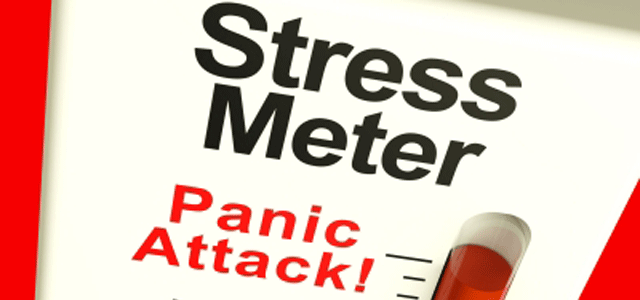How to Stop the Panic Attack Cycle
March 31, 2012

Millions of people suffer from regular panic attacks, and yet panic attacks are still vastly misunderstood. Panic attacks are a mental health problem, not a physical health problem, but panic attacks are caused by one physical component: oversensitivity to harmless physical changes.
The first cause of a panic attack can be anything, and is usually triggered by some type of severe anxiety. Unfortunately, after that first panic attack, the most common cause of future panic attack is a fear of a panic attack. The mind has a tendency to pay too much attention to even the most minute physical changes, leading to a cycle of panic attacks that is difficult to stop.
Break The Cycle
Breaking this cycle can be difficult. Fear of panic attacks causes anxiety. Anxiety causes both an increased heart rate and a hypersensitivity to body changes. That hypersensitivity misreads the heart rate increase and another panic attack is triggered.
The good news is, there are two parts to breaking the panic attack cycle:
1. Education
Educating yourself about panic attacks, symptoms and experiences is the first part, and potentially the most important. That’s because the hardest part of a panic attack is the belief that something is physically wrong with you. It’s why most people that don’t know they’re experiencing a panic attack end up in the hospital. The fear that something is wrong is so pronounced, they think they’re dying.
That’s why it’s important to fully acknowledge to yourself that you have panic disorder, and to learn more about it. The more you understand the symptoms, what triggers them and how your response to them effects the severity of the panic disorder, the easier it is to see and stop the cycle.
These cycles occur so often that you can eventually expect the panic attack and once it starts you can sit there and find a way to calm yourself down. This will help it go away much faster.
2. Coping
Once you’ve acknowledge the panic disorder, you can look for better ways to cope. Panic isn’t something that can simply stop. Drugs are not helpful with panic disorder and often have mood and personality altering effects, and while reducing your anxiety is very helpful, it won’t remove the panic attacks completely.
Instead, you need to develop within-panic attack coping strategies. These are strategies you use while you’re having a panic attack to help yourself calm down faster and decrease the severity. The key is to find something that takes your mind off what you are feeling so that you can “ride out” the panic attack until it goes away.
Everyone has a different method that works for them but some examples of these include:
- Excusing yourself to the bathroom: The pressure of realising you’re dealing with a panic attack in a public place can feel a little overwhelming. Heading to the bathroom to deal with it by yourself can be very helpful.
- Prayer: “Happy” prayers are also a good distraction. Don’t pray for the panic attack to go away – that’s focusing too much on the panic attack, which can make the panic attack worse. Instead, pray for your family, your happiness, your contentment. Pray for things that represent positive thoughts. It’s a tool to distract your mind so that it can cope with the panic attack more easily.
- Self-acknowledging behaviour: You can also consider doing a behaviour that acknowledges to yourself that you’re having a panic attack. You never want your mind to lose control. So you can try something like tapping the table and counting each tap, or taking long, deep breaths and counting how long each breath takes. Acknowledging to yourself that you’re experiencing a panic attack is an important part of coping.
Breaking the cycle is a slow process, and it involves first learning to adjust to panic attacks and then finding behaviors that reduce their severity. But over time your panic attack and anxiety symptoms will reduce, and the cycle will slowly be broken.









